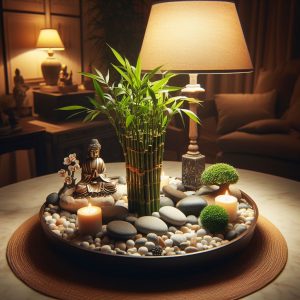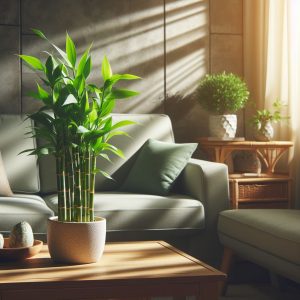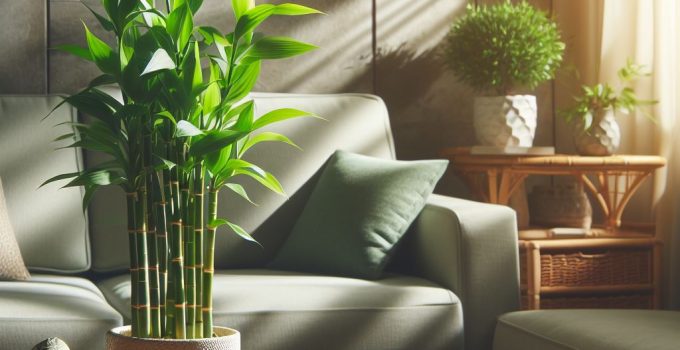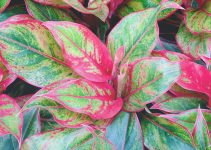Brage Living 18 Inch Industrial Metal Stools Set of 4, Stackable Classroom Stools, Backless Metal Dining Chairs for Indoor Outdoor, Kitchen Short (Black)
(as of July 9, 2025 22:02 GMT +00:00 - More infoProduct prices and availability are accurate as of the date/time indicated and are subject to change. Any price and availability information displayed on [relevant Amazon Site(s), as applicable] at the time of purchase will apply to the purchase of this product.)Fiskars 3-Claw Stand Up Weed Puller Tool, Gardening Weeder, Hand Weeding Tool with 39" Long Ergonomic Handle with Easy-Eject Mechanism
$34.79 (as of July 9, 2025 22:02 GMT +00:00 - More infoProduct prices and availability are accurate as of the date/time indicated and are subject to change. Any price and availability information displayed on [relevant Amazon Site(s), as applicable] at the time of purchase will apply to the purchase of this product.)The Complete Guide to Growing and Caring for Lucky Bamboo Plants Indoors
With its vibrant green stalks and minimal care needs, lucky bamboo is one of the most popular houseplants for beginner gardeners and busy households. Adding these hardy yet graceful plants transforms any indoor space with peaceful, Zen-like energy.
This comprehensive guide will walk you through everything needed to successfully grow lucky bamboo indoors, from choosing the right container to proper watering techniques. Follow these tips and you’ll enjoy a thriving lucky bamboo for years of endless enjoyment.
An Overview of Lucky Bamboo

Lucky bamboo, also known as curly bamboo or Goddess bamboo, is a distinctive looking plant known for its resilience and adaptability. Here’s a quick overview:
- Botanical Name: Dracaena sanderiana
- Native Region: Cameroon, West Africa
- Growth Pattern: Grows in clusters of flexible green cane-like stems with lance-shaped leaves. Reaches 12-24 inches tall indoors.
- Care Level: Very easy. Tolerates a wide range of light and watering conditions.
- Special Factor: Believed to bring good fortune according to Chinese tradition. The perfect gift plant!
With minimal requirements for water, light or maintenance, lucky bamboo thrives with basic care. Their vibrant evergreen foliage and upright stems add life to shelves, desks and tabletops. Read on to learn how to cultivate these enchanting plants in your own home.
Choosing the Right Container
Lucky bamboo can be grown in soil or just in water. The key is choosing the right container for the growing method you prefer.
For Soil Growth
Select a container with drainage holes at the bottom to prevent soggy soil. Materials like plastic, ceramic or terracotta all work well. Choose a wide and sturdy base for stability. Aim for a shape and color that accentuates the bamboo’s green tones.
Size recommendations:
- Single stalk: Minimum 4 inches wide container
- 3-5 stalks: 6 to 8 inches wide
- 5-10 stalks: 8 to 12 inches wide
Allow 1 to 2 inches between the container’s edges and the plant for comfortable growth room.
For Water Growth
Lucky bamboo can grow by just placing the stalk bases in water. Some vessel ideas:
- Clear vases or bottles to showcase roots
- Short bowls or mugs for single stalks
- Decorative containers that complement décor
Avoid old flower vases, as leftover bacteria can rot stalks. Be sure containers provide enough water depth for roots.
Getting Started with Soil or Water
Lucky bamboo offers flexibility in how you start its growth:
With Soil
For soil planting:
- Select a container with drainage holes
- Fill the bottom 1 inch with pebbles for drainage
- Use a well-draining potting mix designed for indoor plants
- Plant stalks at the container’s center, packed closely or spaced apart
- Fill soil around stems, covering roots but not stalks
- Water thoroughly after planting
With Water
For water only planting:
- Select a water container matching stalk length
- Fill with fresh room temperature water
- Place a layer of pebbles or marbles at the bottom
- Arrange bamboo stalks in the container, adding more water to submerge
- Keep away from direct light to inhibit algae growth
- Change water monthly or when cloudy
Either growing method works well indoors! Just avoid soaking stalks themselves.
Caring for Your Lucky Bamboo
To keep your lucky bamboo thriving happily:
Sunlight

Lucky bamboo grows best in bright indirect light, such as:
- Near an east, west or north window
- In a room with ample daylight from southern exposure
- With fluorescent indoor lighting
Avoid direct hot sunlight, which can scorch leaves. Rotate weekly so all sides get light.
Water
Check soil or water level frequently, watering when:
- Soil becomes dry 1-2 inches deep
- Water drops 1 inch below stalk bottoms
Soil: Water thoroughly until it drains from the drainage holes.
Water only: Top off water level weekly or whenever low.
Temperature
- Keep temperatures between 65-90°F / 18-32°C.
- Avoid excess heat near appliances or cold drafts.
Humidity
Lucky bamboo prefers 40-70% humidity. Boost by:
- Placing its container on a pebble humidity tray
- Mist stalks using a spray bottle
- Running a humidifier nearby
Troubleshooting Common Problems
| Problem | Potential Cause | Solution |
|---|---|---|
| Yellowing leaves | Overwatering, underwatering | Adjust watering frequency |
| Browning leaf tips | Low humidity | Increase humidity with misting or pebble tray |
| Curling inward leaves | Insufficient light | Provide brighter light or grow lights |
| Soft, limp stalks | Overwatering | Reduce watering, check for root rot |
| Yellowish stalks | Nutrient deficiency | Fertilize monthly during growing season |
If your lucky bamboo shows signs of distress, the usual culprits are improper watering, low humidity or insufficient light.
Problem: Yellowing or browning leaves
Cause: Too much or too little water
Solution: Adjust watering schedule. Add pebbles to lift stalks if sitting in excess water.
Problem: Leaf tips turning brown
Cause: Low humidity
Solution: Mist frequently or use a pebble tray. Move away from heating vents.
Problem: Leaves curling inward
Cause: Insufficient light
Solution: Relocate to brighter location or install grow lights.
Problem: Soft, limp stalks
Cause: Overwatering
Solution: Reduce watering frequency. Check roots for rot. Cut away any mushy parts.
Problem: Stalks turning yellowish
Cause: Not enough nutrients
Solution: Apply diluted liquid fertilizer monthly in growing seasons.
Catching issues early and adjusting care prevents further damage. With proper corrections, lucky bamboo usually rebounds quickly.
Optimizing Growth Through Proper Pruning
Pruning lucky bamboo improves its shape and maximizes new growth. Trim when:
- Leaves or tops look unattractive
- Stems grow too dense
- Leaning or uneven growth develops
- You want to harvest stalks
Use sharp, sterile pruners to avoid crushing stems. Cut stems at an angle to allow water runoff. Recut under water.
Trimming tips:
- Remove lower leaves and nodes for bare stem appearance
- For bushier growth, prune stem tops
- Cut back overly long, lanky stems
- Divide congested clusters into individual stems
- Harvest mature stalks, leaving some buds
Disinfect tools after use. Pruning induces new shoots so your lucky bamboo stays full and sculpted.
Propagating Your Lucky Bamboo
Lucky bamboo is simple to propagate. Just divide and replant mature stalks.
To propagate:
- Select healthy stalks that are 6 inches or longer
- Sterilize pruning shears to avoid bacteria
- Cut off top 2 inches of the stalk
- Make a second cut 3-5 inches below the first
- Place the trimmed top stalk portion in water or moist soil
- New roots and shoots will begin growing within weeks
- Plant the top stalk into soil or a water vessel once well rooted
Meanwhile, the original stalk left in soil will generate new side shoots. Propagating doubles your lucky bamboo for free!
Styling Inspiration for Displaying Lucky Bamboo
Artfully arranging lucky bamboo stems creates a serene focal point. Some fun ideas:
- Shape stalks in flowing arcs or spirals
- Group 3-5 stems in odd numbers for visual balance
- Alternate tall and short stems
- Coil into bonsai-like designs
- Place stones or marbles at the base for Zen appeal
- Surround with rocks and sand in place of soil
- Mix in decorative elements like gems or ribbons
- Combine multiple plants for a bamboo wall effect
Let your creativity run wild! Shaping lucky bamboo adds natural artistry to your indoor décor.
Gift Giving With Lucky Bamboo
In Asian culture, lucky bamboo symbolizes good fortune and prosperity. It’s a go-to gift for special occasions like:
- Birthdays
- Graduations
- Weddings
- New homes or businesses
- Holiday giving
Selecting appropriate stalk numbers conveys different meanings:
- 2 stalks – Love and happiness for newlyweds or couples
- 3 stalks – Happiness, wealth and longevity
- 5 stalks – Health, wealth, longevity, fame and romance
- 7 stalks – Good health
- 8 stalks – Growth and prosperity
- 21 stalks – Extensive good luck and blessings
Combine lucky bamboo with decorative vases, stones, ribbons or ornaments to create one-of-a-kind gifts. The meaningful messages will be appreciated and the plant enjoyed for years to come.
Extensive Questions and Answers About Lucky Bamboo Care
Still have questions about successfully growing lucky bamboo indoors? Here are detailed answers to the most frequently asked lucky bamboo care and troubleshooting questions:
Q: How much light does lucky bamboo need?
Lucky bamboo grows best in moderate indirect sunlight. Place it near an east or west facing window where it will receive 3-5 hours of sun daily. North facing rooms work well too. Avoid hot direct southern sun exposure. If light from windows is inadequate, install grow lights to provide supplemental lighting. Rotate the plant weekly to ensure even green growth.
Q: What temperatures are best for lucky bamboo?
Lucky bamboo prefers average room temperatures between 65°F to 90°F, with an ideal range of 70°F to 80°F. Avoid placing it in hot spots near appliances that may dry out the foliage or in cold drafts from windows and doors. Cooler nighttime temps allow the plant to rest. Use shades or curtains to block excessive afternoon sun heating. Maintain even, comfortable temps for vibrant lucky bamboo.
Q: How often and how much should I water lucky bamboo?
Watering needs can vary based on climate, time of year, and whether potted in soil or water. As a general rule, check soil moisture every 1-2 weeks by inserting a finger 1 inch deep – water thoroughly when the top 1-2 inches become dry. For bamboo grown in just water, top off containers when water drops over 1 inch below stalk bases. Add just enough fresh water to return to an appropriate level. Take care not to overwater – saturated soil or water promotes root rot. Let the container drain fully after watering potted plants before returning to its decorative holder.
Q: What kind of soil should I use for lucky bamboo?
Choose a well-draining all purpose indoor potting soil. You can also create your own mix by combining 60% sterile potting soil, 20% perlite or pumice for aeration, and 20% peat moss or compost to retain moisture. Adding an inch of gravel at the container’s bottom improves drainage. Avoid soil mixes with added fertilizer, as these have too much nutrient content for lucky bamboo’s needs.
Following proper care guidelines diligently will keep your lucky bamboo thriving in perfect health for years of enjoyment.
Bringing Luck, Harmony and Beauty with Lucky Bamboo
Few plants add such graceful elegance while needing so little maintenance. Lucky bamboo’s vibrant evergreen stalks and lush leaves infuse indoor spaces with natural serenity. Thoughtful gifts for special occasions, these worry-free plants styled in infinite designs introduce Asian tranquility into home and work environments.
By providing the essentials of bright filtered light, moderate year-round temperatures, humid air and proper irrigation, lucky bamboo rewards growers with vigorous long-lasting beauty. Their hardy resilience, yet stunning architectural shapes make them the ideal easy-care houseplant.
So open your home to good fortune and positive energy with the vibrant green magic of lucky bamboo. Follow the growing tips outlined, and enjoy these captivating plants enhancing your indoor décor for years to come!



























